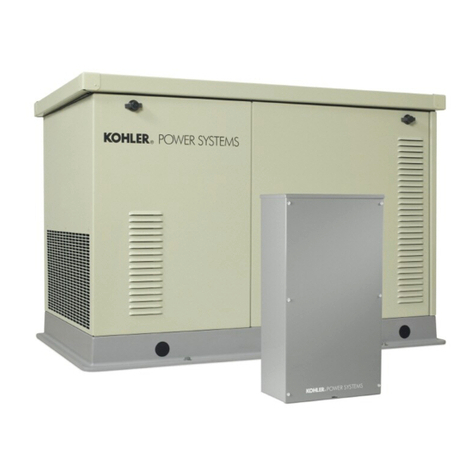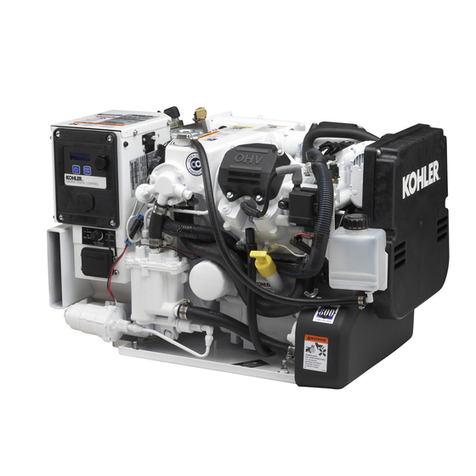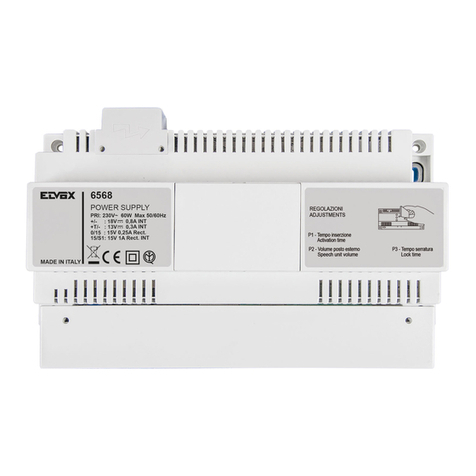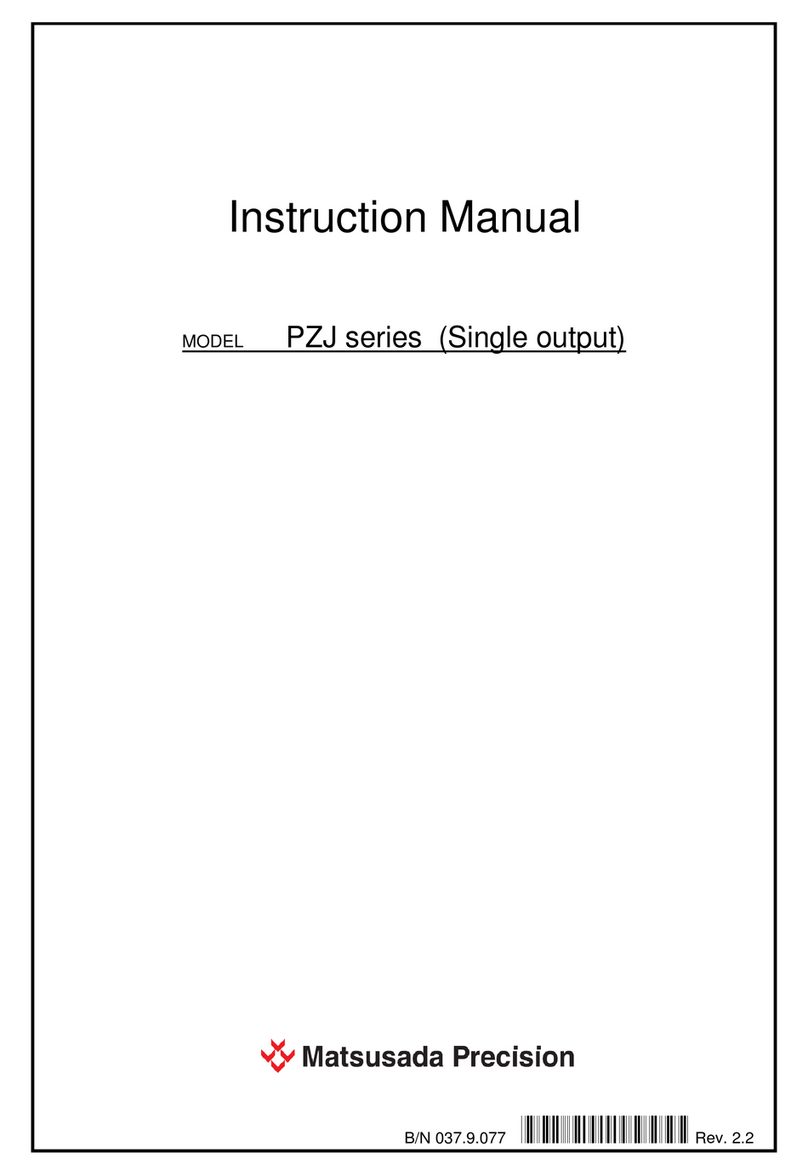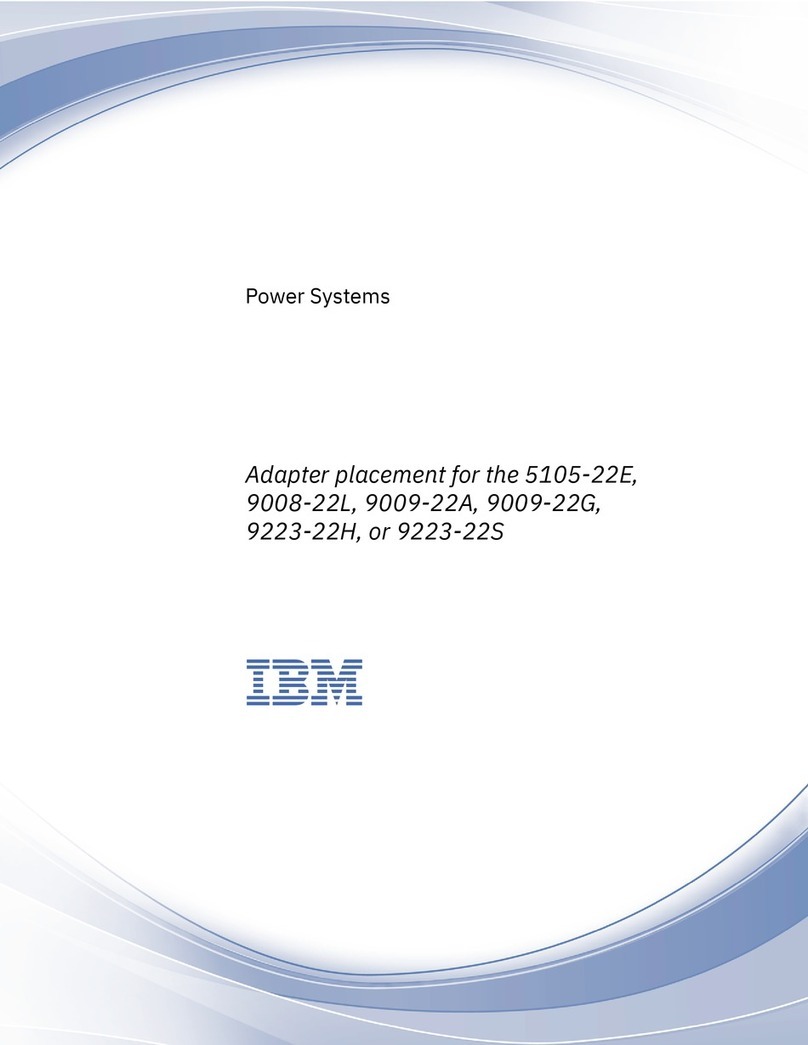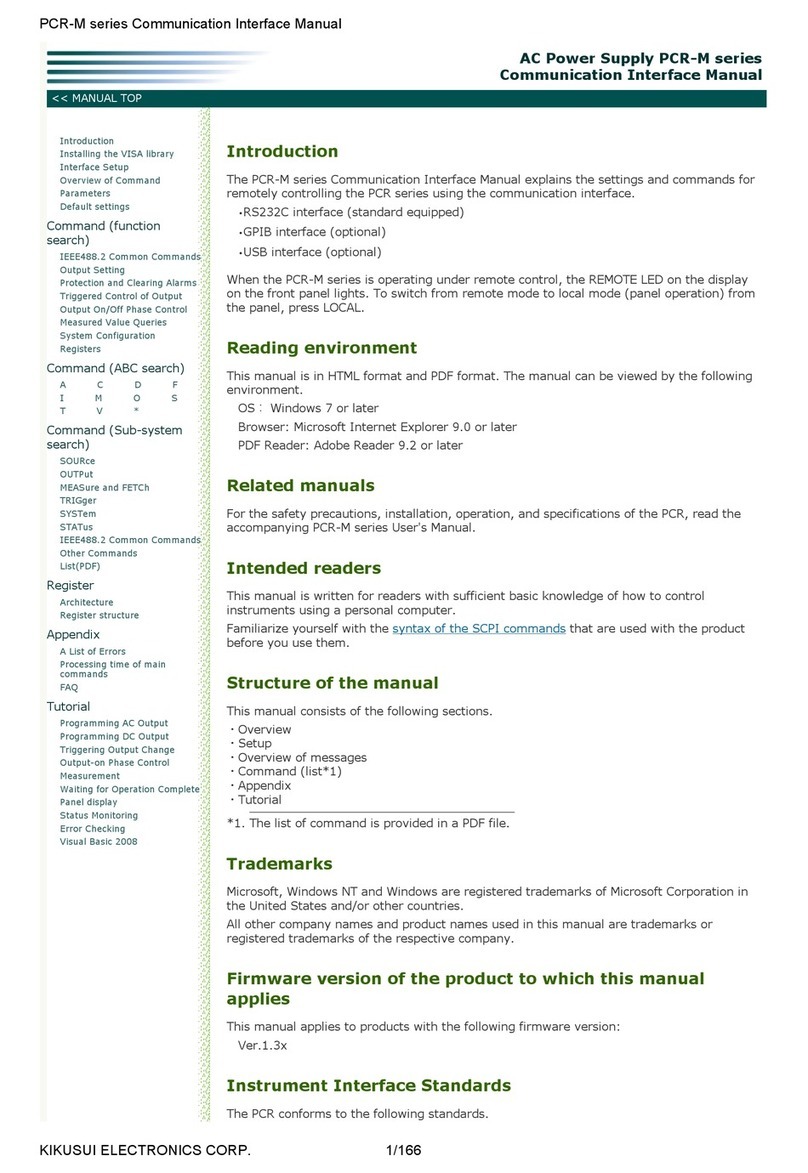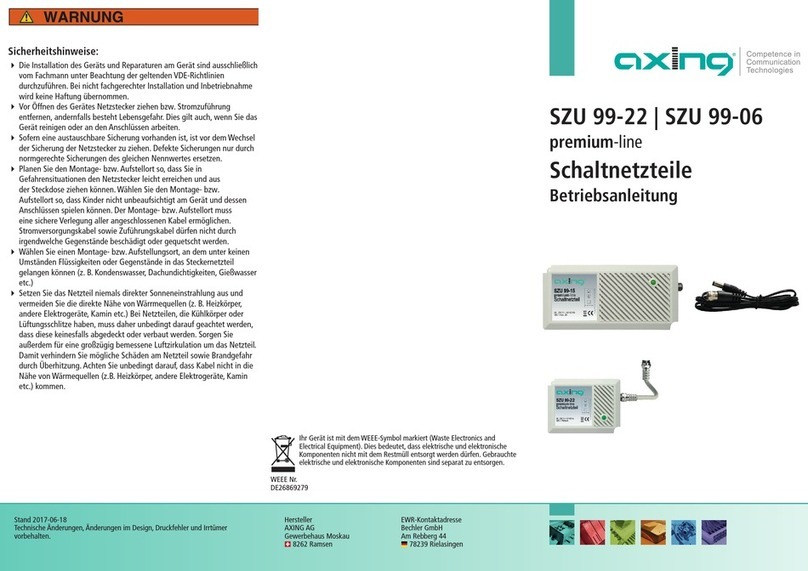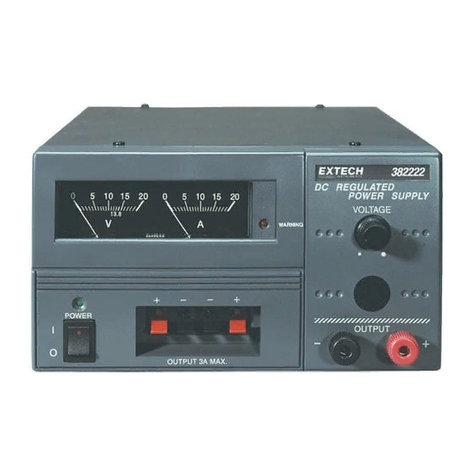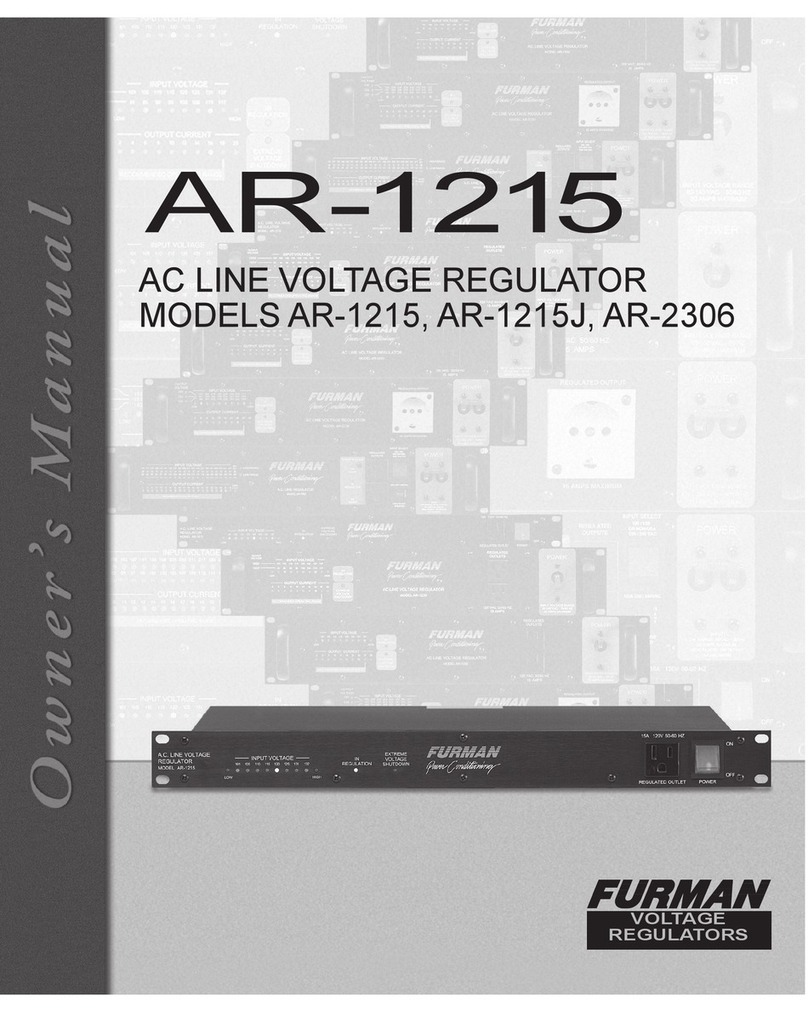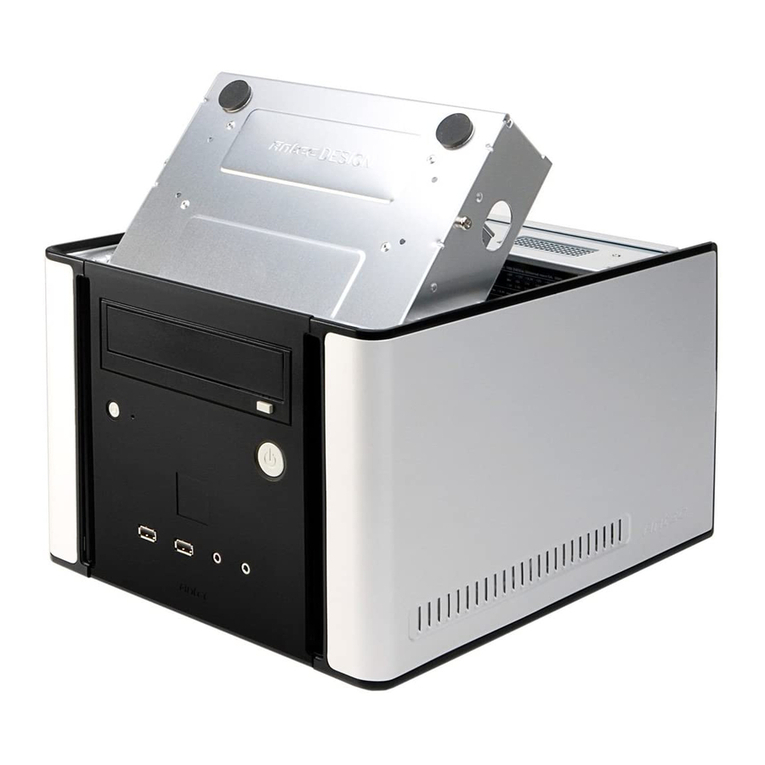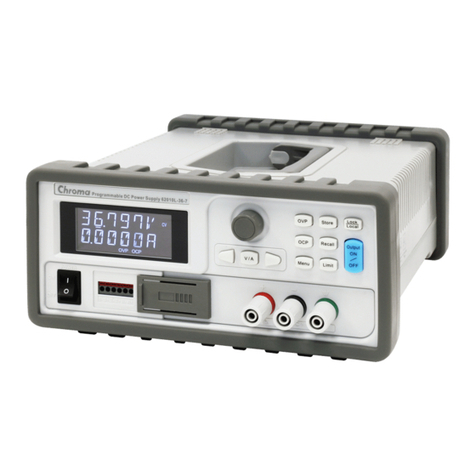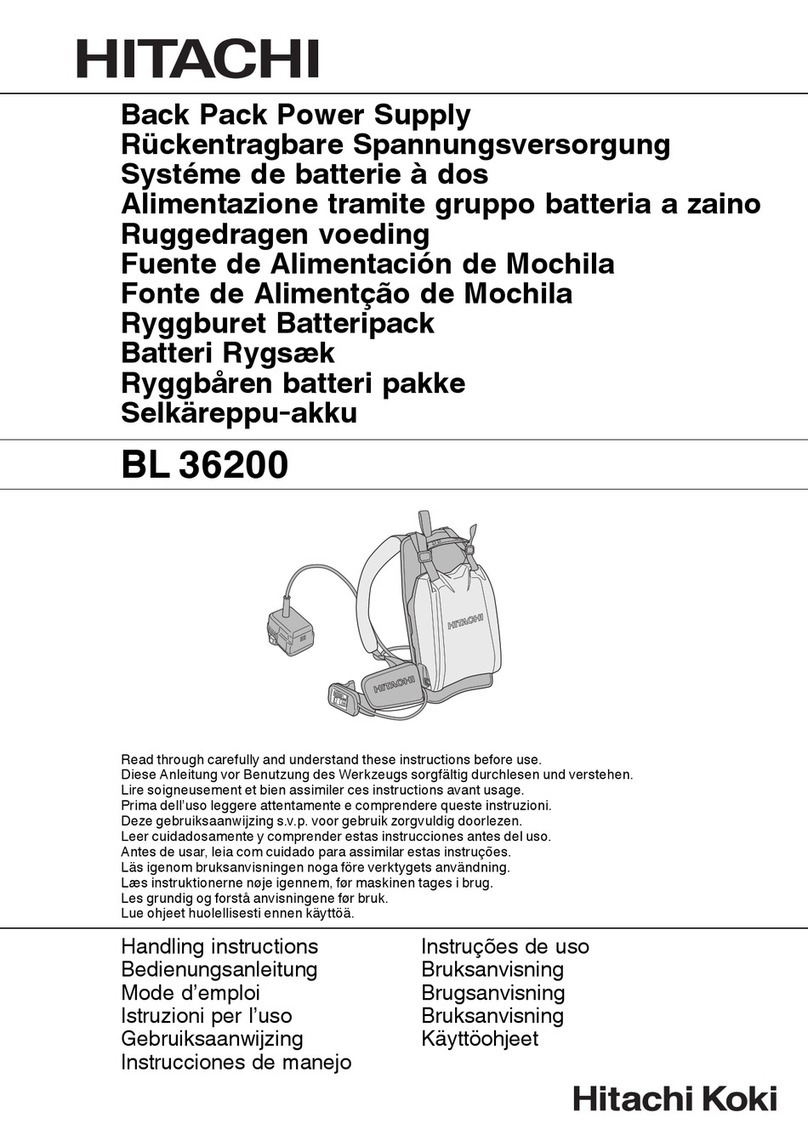Kohler MT80CHP User manual

Micro Turbine CHP
Installation
Models:
MT80CHP
TP-6242 8/03

Engine exhaust from this product contains chemicals
known to the State of California to cause cancer, birth
defects, or other reproductive harm.
WARNING
California Proposition 65
Product Identification Information
Product identification numbers determine service parts.
Record the product identification numbers in the spaces
below immediately after unpacking the products so that
the numbers are readily available for future reference.
Record field-installed kit numbers after installing the
kits.
Micro Turbine Identification Numbers
Record the product identification numbers from the
micro turbine’s nameplate(s).
Model Designation
Specification Number
Serial Number
Accessory Number Accessory Description

Table of Contents
TP-6242 8/03 Table of Contents
Safety Precautions and Instructions I........................................................
Introduction i...............................................................................
Service Assistance i........................................................................
Section 1 General Information 1.............................................................
1.1 Introduction 1..........................................................
1.2 Safety 1...............................................................
1.3 General Description 1...................................................
1.4 Variants 2..............................................................
1.4.1 Cogeneration Systems 2.........................................
1.4.2 Simple Cycle 3.................................................
1.5 Oil Cooling 3...........................................................
Section 2 Technical Data and Specifications 5................................................
2.1 Performance Specifications 5.............................................
2.1.1 Fully Recuperated System 5......................................
2.2 Mechanical Specifications 5..............................................
2.3 Environmental Specifications 5...........................................
2.4 Electrical Specifications 6................................................
2.4.1 General 6......................................................
2.4.2 Utility Mode 6...................................................
2.4.3 Insulation Test Specification 6....................................
2.4.4 Generator Protection (Factory Default Settings) 6...................
2.5 Control Specifications 7..................................................
2.6 Standard Product Features 7.............................................
2.7 Available Options 7.....................................................
Section 3 Installation Requirements 11........................................................
3.1 Safety 11...............................................................
3.2 General 11..............................................................
3.2.1 Storage Guidelines 11............................................
3.2.2 Site Criteria and Working Area 11..................................
3.3 Electrical System 11......................................................
3.3.1 Connection Guidelines 11.........................................
3.3.2 Protection of Embedded Generators Operating in Utility Mode 12.......
3.3.3 Grounding 12....................................................
3.4 Heated Water System 13.................................................
3.4.1 Water Treatment 13..............................................
3.4.2 Pressure Relief Valve 13..........................................
3.4.3 Recommended Pipe Connections 14...............................
3.4.4 Micro Turbine Fully Recuperated System Typical Heating
System Applications 14...........................................
3.5 Gas Fuel System 15......................................................
3.5.1 Gas Supply System from Gas Boost Compressor 15..................
3.5.2 Gas Supply System from High Pressure Gas Supply 15...............
3.6 Protection Against Reverse Pressurization in Gas Supply 16...................
3.7 Protection Against Gas Condensate Formation 16............................
3.8 Air And Exhaust System 16...............................................
3.8.1 Engine Aspiration Air Intake 16....................................
3.8.2 Cooling Air Intake and Outlet 17....................................
3.8.3 Engine Exhaust 17...............................................

Table of Contents, continued
TP-6242 8/03Table of Contents
3.9 Onsite Installation 17.....................................................
3.9.1 Gas Safety Train Installation 18....................................
3.9.2 Electrical Connections 18.........................................
3.10 External Controls, Remote Monitoring, and Metering 19.......................
3.10.1 External Controls and Alarms 19...................................
3.10.2 Remote Monitoring 21............................................
Section 4 Prestart Checklist 23...............................................................
4.1 Safety Precautions 23....................................................
4.2 Prestart Checks 23.......................................................
Section 5 Installation Drawings 25............................................................
Appendix A Abbreviations A-1................................................................
Appendix B Glossary of Micro Turbine Terms A-3..............................................

TP-6242 8/03 ISafety Precautions and Instructions
Safety Precautions and Instructions
IMPORTANT SAFETY
INSTRUCTIONS. Electromechanical
equipment, including generator sets,
transfer switches, switchgear, and
accessories, can cause bodily harm
and pose life-threatening danger when
improperly installed, operated, or
maintained. To prevent accidents be
aware of potential dangers and act
safely. Read and follow all safety
precautions and instructions. SAVE
THESE INSTRUCTIONS.
This manual has several types of safety
precautions and instructions: Danger,
Warning, Caution, and Notice.
DANGER
Danger indicates the presence of a
hazard that will cause severe
personal injury, death,orsubstantial
property damage.
WARNING
Warning indicates the presence of a
hazard that can cause severe
personal injury, death, or substantial
property damage.
CAUTION
Caution indicates the presence of a
hazard that will or can cause minor
personal injury or property damage.
NOTICE
Notice communicates installation,
operation, or maintenance information
that is safety related but not hazard
related.
Safety decals affixed to the equipment
in prominent places alert the operator
or service technician to potential
hazards and explain how to act safely.
The decals are shown throughout this
publication to improve operator
recognition. Replace missing or
damaged decals.
Accidental Starting
Accidental starting.
Can cause severe injury or death.
Disconnect the battery cables before
working on the generator set.
Remove the negative (--) lead first
when disconnecting the battery.
Reconnect the negative (--) lead last
when reconnecting the battery.
WARNING
Disabling the generator set.
Accidental starting can cause
severe injury or death. Before
working on the generator set or
connected equipment, disable the
generator set as follows: (1) Move the
generator set master switch to the OFF
position. (2) Disconnect the power to
the battery charger. (3) Remove the
battery cables, negative (--) lead first.
Reconnect the negative (--) lead last
when reconnecting the battery. Follow
these precautions to prevent starting of
the generator set by an automatic
transfer switch, remote start/stop
switch, or engine start command from a
remote computer.
Battery
Sulfuric acid in batteries.
Can cause severe injury or death.
Wear protective goggles and
clothing. Battery acid may cause
blindness and burn skin.
WARNING
Explosion.
Can cause severe injury or death.
Relays in the battery charger
cause arcs or sparks.
Locate the battery in a well-ventilated
area. Isolate the battery charger from
explosive fumes.
WARNING
Battery electrolyte is a diluted
sulfuric acid. Battery acid can cause
severe injury or death. Battery acid
can cause blindness and burn skin.
Always wear splashproof safety
goggles, rubber gloves, and boots
when servicing the battery. Do not
open a sealed battery or mutilate the
battery case. If battery acid splashes in
the eyes or on the skin, immediately
flush the affected area for 15 minutes
with large quantities of clean water.
Seek immediate medical aid in the case
of eye contact. Never add acid to a
battery after placing the battery in
service, as this may result in hazardous
spattering of battery acid.
Battery acid cleanup. Battery acid
can cause severe injury or death.
Battery acid is electrically conductive
and corrosive. Add 500 g (1 lb.) of
bicarbonate of soda (baking soda) to a
containerwith4L(1gal.)ofwaterand
mix the neutralizing solution. Pour the
neutralizing solution on the spilled
battery acid and continue to add the
neutralizing solution to the spilled
battery acid until all evidence of a
chemical reaction (foaming) has
ceased. Flush the resulting liquid with
water and dry the area.

TP-6242 8/03II Safety Precautions and Instructions
Battery gases. Explosion can cause
severe injury or death. Battery gases
can cause an explosion. Do not smoke
or permit flames or sparks to occur near
a battery at any time, particularly when
it is charging. Do not dispose of a
battery in a fire. To prevent burns and
sparks that could cause an explosion,
avoid touching the battery terminals
with tools or other metal objects.
Remove all jewelry before servicing the
equipment. Discharge static electricity
from your body before touching
batteries by first touching a grounded
metal surface away from the battery. To
avoid sparks, do not disturb the battery
charger connections while the battery
is charging. Always turn the battery
charger off before disconnecting the
battery connections. Ventilate the
compartments containing batteries to
prevent accumulation of explosive
gases.
Battery short circuits. Explosion
can cause severe injury or death.
Short circuits can cause bodily injury
and/or equipment damage.
Disconnect the battery before
generator set installation or
maintenance. Remove all jewelry
before servicing the equipment. Use
tools with insulated handles. Remove
the negative (--) lead first when
disconnecting the battery. Reconnect
the negative (--) lead last when
reconnecting the battery. Never
connect the negative (--) battery cable
to the positive (+) connection terminal
of the starter solenoid. Do not test the
battery condition by shorting the
terminals together.
Engine Backfire/Flash
Fire
Fire.
Can cause severe injury or death.
Do not smoke or permit flames or
sparks near fuels or the fuel system.
WARNING
Servicing the fuel system. A flash
fire can cause severe injury or death.
Do not smoke or permit flames or
sparks near the carburetor, fuel line,
fuel filter, fuel pump, or other potential
sources of spilled fuels or fuel vapors.
Catch fuels in an approved container
when removing the fuel line or
carburetor.
Servicing the air cleaner. A sudden
backfire can cause severe injury or
death. Do not operate the generator
set with the air cleaner removed.
Combustible materials. A fire can
cause severe injury or death.
Generator set engine fuels and fuel
vapors are flammable and explosive.
Handle these materials carefully to
minimize the risk of fire or explosion.
Equip the compartment or nearby area
with a fully charged fire extinguisher.
Select a fire extinguisher rated ABC or
BC for electrical fires or as
recommended by the local fire code or
an authorized agency. Train all
personnel on fire extinguisher
operation and fire prevention
procedures.
Exhaust System
Carbon monoxide.
Can cause severe nausea,
fainting, or death.
The exhaust system must be
leakproof and routinely inspected.
WARNING
Generator set operation. Carbon
monoxide can cause severe nausea,
fainting, or death. Carbon monoxide
is an odorless, colorless, tasteless,
nonirritating gas that can cause death if
inhaled for even a short time. Avoid
breathing exhaust fumes when working
on or near the generator set. Never
operate the generator set inside a
building unless the exhaust gas is
piped safely outside. Never operate
the generator set where exhaust gas
could accumulate and seep back inside
a potentially occupied building.
Carbon monoxide symptoms.
Carbon monoxide can cause severe
nausea, fainting, or death. Carbon
monoxide is a poisonous gas present in
exhaust gases. Carbon monoxide
poisoning symptoms include but are
not limited to the following:
DLight-headedness, dizziness
DPhysical fatigue, weakness in
joints and muscles
DSleepiness, mental fatigue,
inability to concentrate
or speak clearly, blurred vision
DStomachache, vomiting, nausea
If experiencing any of these symptoms
and carbon monoxide poisoning is
possible, seek fresh air immediately
and remain active. Do not sit, lie down,
or fall asleep. Alert others to the
possibility of carbon monoxide
poisoning. Seek medical attention if
the condition of affected persons does
not improve within minutes of breathing
fresh air.
Copper tubing exhaust systems.
Carbon monoxide can cause severe
nausea, fainting, or death. Do not
use copper tubing in diesel exhaust
systems. Sulfur in diesel exhaust
causes rapid deterioration of copper
tubing exhaust systems, resulting in
exhaust leakage.
Fuel System
Explosive fuel vapors.
Can cause severe injury or death.
Use extreme care when handling,
storing, and using fuels.
WARNING
The fuel system. Explosive fuel
vapors can cause severe injury or
death. Vaporized fuels are highly
explosive. Use extreme care when
handling and storing fuels. Store fuels
inawell-ventilatedareaawayfrom
spark-producing equipment and out of
the reach of children. Never add fuel to
the tank while the engine is running
because spilled fuel may ignite on
contact with hot parts or from sparks.
Do not smoke or permit flames or
sparks to occur near sources of spilled

TP-6242 8/03 IIISafety Precautions and Instructions
fuel or fuel vapors. Keep the fuel lines
and connections tight and in good
condition. Do not replace flexible fuel
lines with rigid lines. Use flexible
sections to avoid fuel line breakage
caused by vibration. Do not operate the
generator set in the presence of fuel
leaks, fuel accumulation, or sparks.
Repair fuel systems before resuming
generator set operation.
Explosive fuel vapors can cause
severe injury or death. Take
additional precautions when using the
following fuels:
Natural Gas—Adequate ventilation is
mandatory. Because natural gas rises,
install natural gas detectors high in a
room. Inspect the detectors per the
manufacturer’s instructions.
Gas fuel leaks. Explosive fuel
vapors can cause severe injury or
death. Fuel leakage can cause an
explosion. Check the LP vapor gas or
natural gas fuel system for leakage by
using a soap and water solution with
the fuel system test pressurized to
6--8 ounces per square inch
(10--14 inches water column). Do not
use a soap solution containing either
ammonia or chlorine because both
prevent bubble formation. A successful
test depends on the ability of the
solution to bubble.
Hazardous Noise
Hazardous noise.
Can cause hearing loss.
Never operate the generator set
without a muffler or with a faulty
exhaust system.
CAUTION
Engine noise. Hazardous noise can
cause hearing loss. Generator sets
not equipped with sound enclosures
can produce noise levels greater than
105 dBA. Prolonged exposure to noise
levels greater than 85 dBA can cause
permanent hearing loss. Wear hearing
protection when near an operating
generator set.
Hazardous Voltage/
Electrical Shock
Hazardous voltage.
Will cause severe injury or death.
Disconnect all power sources before
opening the enclosure.
DANGER
Hazardous voltage.
Can cause severe injury or death.
Operate the generator set only when
all guards and electrical enclosures
areinplace.
Moving rotor.
WARNING
Hazardous voltage.
Backfeed to the utility system can
cause property damage, severe
injury, or death.
If the generator set is used for
standby power, install an automatic
transfer switch to prevent inadvertent
interconnection of standby and
normal sources of supply.
WARNING
Grounding electrical equipment.
Hazardous voltage can cause
severe injury or death. Electrocution
is possible whenever electricity is
present. Open the main circuit
breakers of all power sources before
servicing the equipment. Configure the
installation to electrically ground the
generator set, transfer switch, and
related equipment and electrical
circuits to comply with applicable codes
and standards. Never contact
electrical leads or appliances when
standing in water or on wet ground
because these conditions increase the
risk of electrocution.
Installing the battery charger.
Hazardous voltage can cause
severe injury or death. An
ungrounded battery charger may
cause electrical shock. Connect the
battery charger enclosure to the ground
of a permanent wiring system. As an
alternative, install an equipment
grounding conductor with circuit
conductors and connect it to the
equipment grounding terminal or the
lead on the battery charger. Install the
battery charger as prescribed in the
equipment manual. Install the battery
charger in compliance with local codes
and ordinances.
Connecting the battery and the
battery charger. Hazardous voltage
can cause severe injury or death.
Reconnect the battery correctly,
positive to positive and negative to
negative, to avoid electrical shock and
damage to the battery charger and
battery(ies). Have a qualified
electrician install the battery(ies).
Short circuits. Hazardous
voltage/current can cause severe
injury or death. Short circuits can
cause bodily injury and/or equipment
damage.Do not contact electrical
connections with tools or jewelry while
making adjustments or repairs.
Remove all jewelry before servicing the
equipment.

TP-6242 8/03IV Safety Precautions and Instructions
Electrical backfeed to the utility.
Hazardous backfeed voltage can
cause severe injury or death. Install
a transfer switch in standby power
installations to prevent the connection
of standby and other sources of power.
Electrical backfeed into a utility
electrical system can cause severe
injury or death to utility personnel
working on power lines.
Testing live electrical circuits.
Hazardous voltage or current can
cause severe injury or death. Have
trained and qualified personnel take
diagnostic measurements of live
circuits. Use adequately rated test
equipment with electrically insulated
probes and follow the instructions of the
test equipment manufacturer when
performing voltage tests. Observe the
following precautions when performing
voltage tests: (1) Remove all jewelry.
(2) Stand on a dry, approved electrically
insulated mat. (3) Do not touch the
enclosure or components inside the
enclosure. (4) Be prepared for the
system to operate automatically.
(600 volts and under)
Servicing the transfer switch.
Hazardous voltage can cause
severe injury or death. Deenergize all
power sources before servicing. Open
the main circuit breakers of all transfer
switch power sources and disable all
generator sets as follows: (1) Move all
generator set master controller
switches to the OFF position. (2)
Disconnect power to all battery
chargers. (3) Disconnect all battery
cables, negative (--) leads first.
Reconnect negative (--) leads last when
reconnecting the battery cables after
servicing. Follow these precautions to
prevent the starting of generator sets
by an automatic transfer switch, remote
start/stop switch, or engine start
command from a remote computer.
Before servicing any components
inside the enclosure: (1) Remove all
jewelry. (2) Stand on a dry, approved
electrically insulated mat. (3) Test
circuits with a voltmeter to verify that
they are deenergized.
Servicing the transfer switch
controls and accessories within the
enclosure. Hazardous voltage can
cause severe injury or death.
Disconnect the transfer switch controls
at the inline connector to deenergize
the circuit boards and logic circuitry but
allow the transfer switch to continue to
supply power to the load. Disconnect
all power sources to accessories that
are mounted within the enclosure but
are not wired through the controls and
deenergized by inline connector
separation. Test circuits with a
voltmeter to verify that they are
deenergized before servicing.
Heavy Equipment
Unbalanced weight.
Improper lifting can cause severe
injury or death and equipment
damage.
Do not use lifting eyes.
Lift the generator set using lifting bars
inserted through the lifting holes on
the skid.
WARNING
Hot Parts
Hot coolant and steam.
Can cause severe injury or death.
Before removing the pressure cap,
stop the generator set and allow it to
cool. Then loosen the pressure cap
to relieve pressure.
WARNING
Hot engine and exhaust system.
Can cause severe injury or death.
Do not work on the generator set until
it cools.
WARNING
Servicing the generator. Hot parts
can cause severe injury or death.
Avoid touching the generator set field
or exciter armature. When shorted, the
generator set field and exciter armature
become hot enough to cause severe
burns.
Checking the coolant level. Hot
coolant can cause severe injury or
death. Allow the engine to cool.
Release pressure from the cooling
system before removing the pressure
cap. To release pressure, cover the
pressure cap with a thick cloth and then
slowly turn the cap counterclockwise to
the first stop. Remove the cap after
pressure has been completely
released and the engine has cooled.
Check the coolant level at the tank if the
generator set has a coolant recovery
tank.
Servicing the exhaust system. Hot
parts can cause severe injury or
death. Do not touch hot engine parts.
The engine and exhaust system
components become extremely hot
during operation.

TP-6242 8/03 VSafety Precautions and Instructions
Moving Parts
Hazardous voltage.
Can cause severe injury or death.
Operate the generator set only when
all guards and electrical enclosures
areinplace.
Moving rotor.
WARNING
Rotating parts.
Can cause severe injury or death.
Operate the generator set only when
all guards, screens, and covers are in
place.
WARNING
Airborne particles.
Can cause severe injury or
blindness.
Wear protective goggles and clothing
when using power tools, hand tools,
or compressed air.
WARNING
Tightening the hardware. Flying
projectiles can cause severe injury
or death. Loose hardware can cause
the hardware or pulley to release from
the generator set engine and can cause
personal injury. Retorque all
crankshaft and rotor hardware after
servicing. Do not loosen the crankshaft
hardware or rotor thrubolt when making
adjustments or servicing the generator
set. Rotate the crankshaft manually in
a clockwise direction only. Turning the
crankshaft bolt or rotor thrubolt
counterclockwise can loosen the
hardware.
Servicing the generator set when it
is operating. Exposed moving parts
can cause severe injury or death.
Keep hands, feet, hair, clothing, and
test leads away from the belts and
pulleys when the generator set is
running. Replace guards, screens, and
covers before operating the generator
set.
Notice
NOTICE
This generator set has been
rewired from its nameplate voltage
to
246242
NOTICE
Voltage reconnection. Affix a notice
to the generator set after reconnecting
the set to a voltage different from the
voltage on the nameplate. Order
voltage reconnection decal 246242
from an authorized service
distributor/dealer.
NOTICE
Hardware damage. The engine and
generator set may use both American
Standard and metric hardware. Use
the correct size tools to prevent
rounding of the bolt heads and nuts.
NOTICE
When replacing hardware, do not
substitute with inferior grade
hardware. Screws and nuts are
available in different hardness ratings.
To indicate hardness, American
Standard hardware uses a series of
markings, and metric hardware uses a
numeric system. Check the markings
on the bolt heads and nuts for
identification.
NOTICE
Canadian installations only.For
standby service connect the output of
the generator set to a suitably rated
transfer switch in accordance with
Canadian Electrical Code, Part 1.

TP-6242 8/03VI Safety Precautions and Instructions
Notes

TP-6242 8/03 iIntroduction
Introduction
MT80CHP Micro Turbines are compact natural gas-
fired power generators for distributed power generation
applications. The prime mover is a micro gas turbine
and the power generation is derived from a high speed
alternator via a power conversion stage. The systems
can be configured either with or without exhaust gas
heat recovery systems integrated within the system
enclosure.
Where the exhaust gas heat recovery system is
integrated within the system enclosure, it is identified as
a cogeneration system. This is equipped with a
recuperator which heats the combustion air utilizing
exhaust gas heat. Where the exhaust gas heat is made
available for use elsewhere, it is identified as a simple
cycle system that is supplied with neither a recuperator
nor heat recovery system.
Perform all required installation and startup
(commissioning) checks before operating the micro
turbine.
Information in this publication represents data available
at the time of print. Kohler Co. reserves the right to
change this publication and the products represented
without notice and without any obligation or liability
whatsoever.
Read this manual and carefully follow all procedures
and safety precautions to ensure proper equipment
operation and to avoid bodily injury. Read and follow the
Safety Precautions and Instructions section at the
beginning of this manual. Keep this manual with the
equipment for future reference.
Service Assistance
For professional advice on generator power
requirements and conscientious service, please contact
your nearest Kohler distributor or dealer.
DConsult the Yellow Pages under the heading
Generators—Electric
DVisit the Kohler Power Systems website at
KohlerPowerSystems.com
DLook at the labels and stickers on your Kohler product
or review the appropriate literature or documents
included with the product
DCall toll free in the US and Canada 1-800-544-2444
DOutside the US and Canada, call the nearest regional
office
Africa, Europe, Middle East
London Regional Office
Langley, Slough, England
Phone: (44) 1753-580-771
Fax: (44) 1753-580-036
Asia Pacific
Power Systems Asia Pacific Regional Office
Singapore, Republic of Singapore
Phone: (65) 264-6422
Fax: (65) 264-6455
China
North China Regional Office, Beijing
Phone: (86) 10 6518 7950
(86) 10 6518 7951
(86) 10 6518 7952
Fax: (86) 10 6518 7955
East China Regional Office, Shanghai
Phone: (86) 21 6288 0500
Fax: (86) 21 6288 0550
India, Bangladesh, Sri Lanka
India Regional Office
Bangalore, India
Phone: (91) 80 3366208
(91) 80 3366231
Fax: (91) 80 3315972
Japan, Korea
North Asia Regional Office
Tokyo, Japan
Phone: (813) 3440-4515
Fax: (813) 3440-2727
Latin America
Latin America Regional Office
Lakeland, Florida, USA
Phone: (863) 619-7568
Fax: (863) 701-7131
X:in:008:001a

TP-6242 8/03ii Introduction
Notes

TP-6242 8/03 1Section 1 General Information
Section 1 General Information
1.1 Introduction
The weights of the main components within the Micro
Turbine system are shown in Figure 1-1.
Component Weight, kg (lb.)
Heat exchanger (assembled) 220 (485)
Recuperator 170 (375)
Engine (assembled) 130 (287)
Power converter 57 (126)
Rear panel (heat exchanger) 46 (101)
Enclosure door 43 (95)
Side panel (heat exchanger) 41 (90)
Silencer and foam 32 (71)
Heat exchanger transition duct 24 (53)
Extract fan (assembled) 21 (46)
Figure 1-1 System Weights
1.2 Safety
Read and follow the Safety Precautions and Instructions
section of this manual. Applicable safety information is
also included wherever necessary.
Note: Running with doors open for prolonged periods
(i.e. longer than 20 minutes) reduces cooling of
components and could cause premature failure.
1.3 General Description
The micro turbine may be considered as comprising
three main functional areas: control and power
electronics, engine, and heat recovery. These are
contained within three main compartments as shown in
Figure 1-2.
DThe control and power electronics bay contains the
local operator interface (control panel) and electrical
interfaces for the 3-phase power output, auxiliary
power input, and remote control. It monitors and
controls the whole micro turbine and provides
conditioning and switching of the output power
supply.
DThe engine bay contains a combined micro turbine
and alternator, together with all associated systems.
These systems provide the fuel supply, air supply, and
lubrication/cooling (oil) for the turbine and alternator.
DThe heat recovery bay contains the engine
components that provide the micro turbine heat
transfer facilities with 80% efficiency. In the maximum
configuration, these components include a
recuperator with a bypass valve, waste heat recovery
unit, and an oil cooler. See Section 1.4 for a
description of variants.
Figure 1-2 Micro Turbine Main Functional Areas

TP-6242 8/032 Section 1 General Information
1.4 Variants
There are two basic variants of the micro turbine:
DCogeneration Systems—Fully Recuperated System
and Recuperator Bypass System
DSimple Cycle System
1.4.1 Cogeneration Systems
The cogeneration system can be supplied with full
recuperation or with recuperator bypass. Recuperator
bypass diverts additional heat to the heat recovery
module which gives greater heat output and greater
overall efficiency, but lower electrical efficiency.
Fully Recuperated System
The system is fitted with a recuperator that preheats the
combustion air using turbine exhaust, thereby
increasing electrical conversion efficiency. The fully
recuperated variant has no recuperator bypass valve.
SeeFigure1-3.
Recuperator Bypass System
The system is fitted with a recuperator bypass valve.
This valve forms part of the air system and uses an
external heat demand signal to adjust the proportion of
air routed through the recuperator, thus controlling the
heat available to the heat exchanger in the heat
recovery bay. See Figure 1-4.
C&M -- Control and Monitoring
Figure 1-3 Typical Side View/Functional Block Diagram
C&M -- Control and Monitoring
Figure 1-4 Typical Side View/Functional Block Diagram

TP-6242 8/03 3Section 1 General Information
1.4.2 Simple Cycle
A simple cycle variant does not have the recuperator or
heat recovery module. See Figure 1-5.
Note: All configurations can be cooled using an optional
external oil cooler.
1.5 Oil Cooling
In fully recuperated and recuperator bypass systems,
the oil circuit is cooled using return water from the
heating system provided this return water temperature
does not exceed 70°C (158°F). If this return water
temperature is exceeded, install an external oil cooler
option which uses an air blast cooler. For the simply
cycle system, an external oil cooler is required.
C&M -- Control and Monitoring
Figure 1-5 Typical Side View/Functional Block Diagram

TP-6242 8/034 Section 1 General Information
Notes

TP-6242 8/03 5Section 2 Technical Data and Specifications
Section 2 Technical Data and Specifications
2.1 Performance Specifications
2.1.1 Fully Recuperated System
The following performance specifications consist of
typical data only and cannot be guaranteed. All values
are at ISO conditions: 101.3 kPa (14.7 psi), 50_C
(122_F), 60% relative humidity (RH), and at sea level.
G
e
n
e
r
a
l
D
a
t
a
F
u
l
l
y
R
e
c
u
p
e
r
a
t
e
d
General Data Fully Recuperated
Air mass flow, kg/sec (lb./sec.) 0.81 (1.79)
Exhaust mass flow,
kg/sec (lb./sec.) 0.83 (1.83)
Thermal output power (includes
heat recovered from oil), MJ/hr,
kWth/hr (BTU/hr), (therms/hr)
504 (478028),
140 (4.76)
Water inlet temperature, °C(°F) 70 (158)
Water outlet temperature, °C(°F) 90 (194)
Exhaust gas outlet temperature,
°C(°F) 95 (203)
Water flow, Lpm (gpm) 108 (28.5)
Engine speed, rpm 68000
Electrical power output, kWe 80
Dimensions, L x W x H, mm (in.) 3100 x 860 x 1960
(122.4 x 33.9 x 77.2)
Weight, typical dry, kg (lb.) 1818 (4008)
Natural gas consumption,
m3/hr. (ft3/hr.) 30 (1059)
Natural gas gross calorific value,
MJ/m3(BTU/scfm) 38.63 (1037)
Natural gas fuel input, GCV basis,
kWth (BTU/min) 328.4 (18692)
Electrical efficiency based on gross
calorific value, % 24.36
Thermal efficiency based on gross
calorific value, % 43.5
2.2 Mechanical Specifications
Parameter Specification
Engine derating As per attached curves following.
Fuel capability Natural gas
Maximum fuel
temperature, °C(°F) 60 (140)
Maximum gas
pressure at inlet to
gas boost
compressor, mbarg 700
Hot water heat
exchanger
Test certificate and inspection record
can be provided.
Water in temperature: 70°C
maximum (for internal oil cooler
variant).
Water out temperature: 90°C
maximum.
Water side: Working pressure of
3 barg and test pressure of 4.5 barg.
Heat exchanger
construction
Two pass water side, three pass
exhaust gas side. SA-312
Type 316L stainless steel.
2.3 Environmental Specifications
Parameter Specification
Ambient temperature
continuous operating
range, °C(°F)
--10 to 45 (14 to 113)
noncondensing
Typical emissions at
maximum power on
natural gas with full
recuperation (corrected
to 15% O2)
NOx: 25ppm
CO: 50ppm
Sound pressure level 70 dB(A) at 1 meter in free field
Storage range, °C(°F) --25 to 70 noncondensing
Seismic tolerance Meets Code for Qualification of
Generator for Regular and
Emergency Use published by
JEGA.
Waterproof rating IP44, for indoor installation only.
Filtration specification,
aspiration air
Paper element prefilter to
Eurovent Class UE3
(BS EN 799 Class G3)
Fabric main filter to Eurovent
Class UE9
(BS EN 779 Class F9)
Filtration specification,
cooling air
Paper element filter to
Eurovent Class UE3
(BS EN 799 Class G3)
Storage span 6 months standard, extended
storage by special request.

TP-6242 8/036 Section 2 Technical Data and Specifications
2.4 Electrical Specifications
2.4.1 General
Parameter Specification
Voltage
output
D240/416 volt, 3-phase, 4-wire, 60 Hz,
80 kW, 100 kVA, 139 amps.
D277/480 volt, 3-phase, 4-wire, 60 Hz,
80 kW, 100 kVA, 120 amps.
DOther voltages can be provided by using
an external transformer.
Auxiliary
power
requirements
Single phase auxiliary supply for operating
unit connected internally. Stationary
standing unit requires a maximum 40 A
single phase to start.
2.4.2 Utility Mode
These values refer to the conditions at the output
terminals of the generator. Conditions at the output of an
external transformer may differ.
Parameter Specification
Grid connection
capability
The generator has been designed so
that it is suitable for connection to the
utility system in conformity with the
regulatory requirements. The
generator system is designed to
ensure that it functions correctly at the
generator terminals.*
Allowable voltage
range ±10%
Allowable
frequency range ±1%
Harmonic currents As per IEEE 519, Table 10.3
(individual <3%, total demand
distortion <5%)
Output power
factor
(displacement)
Generator output power factor is
adjustable between 0.6 lag, 1.0--0.6
lead.[
Minimum utility
fault level capacity 5kA
Maximum utility
fault level capacity 20 kA
* To fulfil the regulatory requirements, further protection systems
(possibly at a higher voltage) may also be required. These
components are not supplied with the generator package. Your
authorized distributor can assist in the selection of this
equipment, if required.
[This assumes that the total current drawn from the power
conditioner does not exceed the rated value.
2.4.3 Insulation Test Specification
Perform insulation tests according to the supplied
instructions to prevent damage to the electrical system
of the generator set.
Parameter Specification
Power circuits ≤110V 500 VDC
Power circuits >110V 1000 VDC
2.4.4 Generator Protection
(Factory Default Settings)
Protection is fitted to the generator output feed to the
isolating generator transformer. Additional protection
(e.g. reverse power) may also be fitted by the customer
to the generator transformer output circuit breaker and
utility feed circuit breaker. These will be set using the
relevant national standards. Protection for embedded
generators in utility mode may need to be fitted by the
user. Internal protection settings are configured and
protected by passwords.
Parameter Specification
Overcurrent
(instantaneous)
300% of maximum rated current
for 2 cycles.
Thermal overload System will automatically ensure
that the system will not supply
more than maximum rated
current by dropping terminal
voltage. Under normal
circumstances, if an excessive
load is placed on the generator,
the system will shut down on
undervoltage.
Ground leakage 100 mA @ 60 ms
Ground overvoltage
relay
Operates if more than 5 volts
exist between chassis earth and
grounded neutral.
Overvoltage 115% of nominal RMS rated
voltage.
Undervoltage (voltage
mode)
90% of nominal RMS rated
voltage.
Undervoltage (utility
mode)
90% of nominal RMS rated
voltage
Under/overvoltage time
delay
50 x cycle period time—
1000 ms for 50 Hz, 833 ms for
60 Hz
Overfrequency 101% of nominal frequency.
Underfrequency 96% of nominal frequency.
Under/overfrequency
time delay
40 x cycle period time—
800 ms for 50 Hz, 667 ms for
60 Hz

TP-6242 8/03 7Section 2 Technical Data and Specifications
2.5 Control Specifications
Parameter Specification
Remote monitoring and control protocol Modbusr
2.6 Standard Product Features
Parameter Specification
Utility connected Constant power (can be adjusted
remotely via a serial link) for utility
connected mode.
Emergency stop Terminals for remote emergency stop
in 24 VDC safety loop.
Oil temp control Oil heating/cooling is fitted to control
oil temperature to 70°C (158°F).
System startup
and shutdown
Fully automatic sequence control.
This is initiated locally and remote
start/stop is available.
Engine exhaust
gas temperature
(EGT) Mode 1
Maintains constant EGT at any
ambient temperature within
environmental specification and sheds
load to prevent overtemperature
shutdown of system.
2.7 Available Options
Parameter Specification
Gas boost
compressor
See separate gas boost compressor
specification.
Gas safety
train See separate gas safety train specification.
Additional
I/O
An additional I/O board is fitted to all CHP
systems. Additional functionality (e.g. fuel
pressure and oil level monitoring) can be
added at the factory.
Load
following
In utility mode, the system is configured to
reduce site demand. In the case that the
site demand is reduced below the output
rating of the generator, a load following
facility can be added to the generator to
prevent power being exported to the grid.
Dual mode
switch
Remote auto switch from current to voltage
mode (utility to stand alone) and
resynchronization from voltage mode to
current mode (stand alone back to utility).
External oil
cooling
Air blast cooler for oil cooling in simple
cycle systems or for oil cooling independent
of the hot water system in Fully
Recuperated systems.
Data logging Operating data of the system can be logged
and monitored for diagnosis via an external
data logger using the Modbusrinterface.
Data logger
software
Software to enable both trending of
generator parameters and download of
fastlog to capture voltage and current
waveforms.
Remote
control,
monitoring
The system can be locally monitored using
a PC. The above data logger PC can be
linked to a central data collection PC via
phone line and modem. Monitoring
parameters to be identified.
Modbusris a registered trademark of Schneider Electric.

TP-6242 8/038 Section 2 Technical Data and Specifications
0.08
0.07
0.06
0.05
0.04
0.03
0.02
0.01
0
Water Flow Rate (L/sec.)
Pressure Drop (bar differential)
System Waste Heat Recovery Unit Water Pressure Drop
Minimum to Maximum Thermal Output
0.00 2.00 4.00 6.00 8.00 10.00 12.00
System
Figure 2-1 Heat Exchanger Waterside Pressure Drop/Water Flow Rate
20 30 40 50 60 70 80
Power kW
30
25
20
15
10
5
0
Effectivity (%)
(Net CB Basis)
Part Load Efficiency Predictions at Constant Speed
Figure 2-2 Predicted Efficiency Curve For Constant Speed Mode
Table of contents
Other Kohler Power Supply manuals
Popular Power Supply manuals by other brands
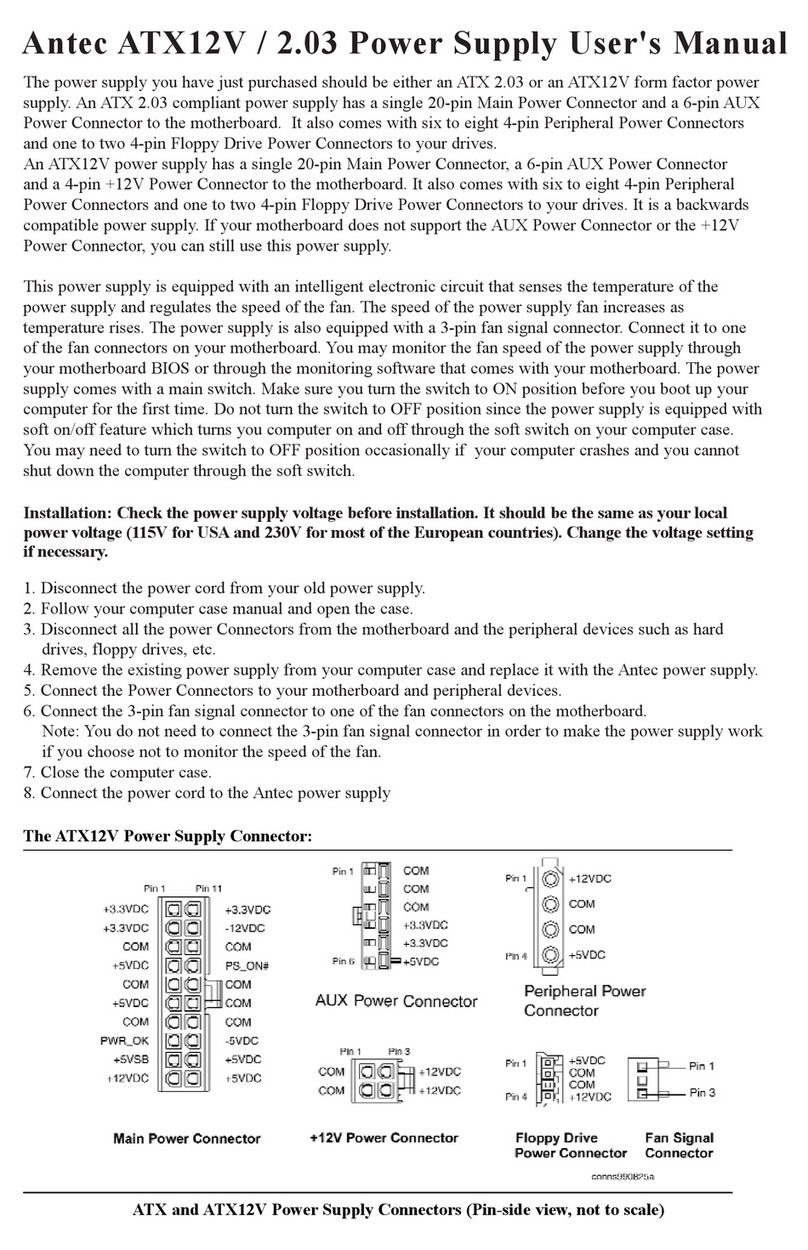
Antec
Antec ATX12V / 2.03 user manual
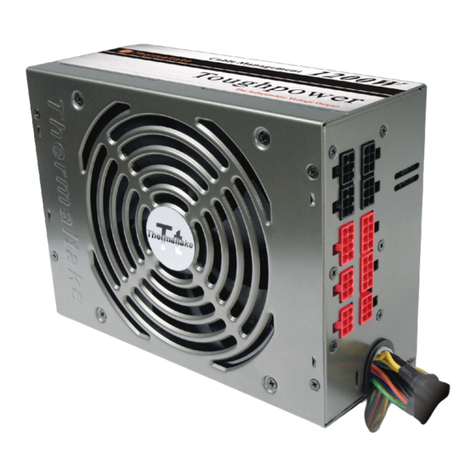
Thermaltake
Thermaltake ATX 12V 2.2 user manual
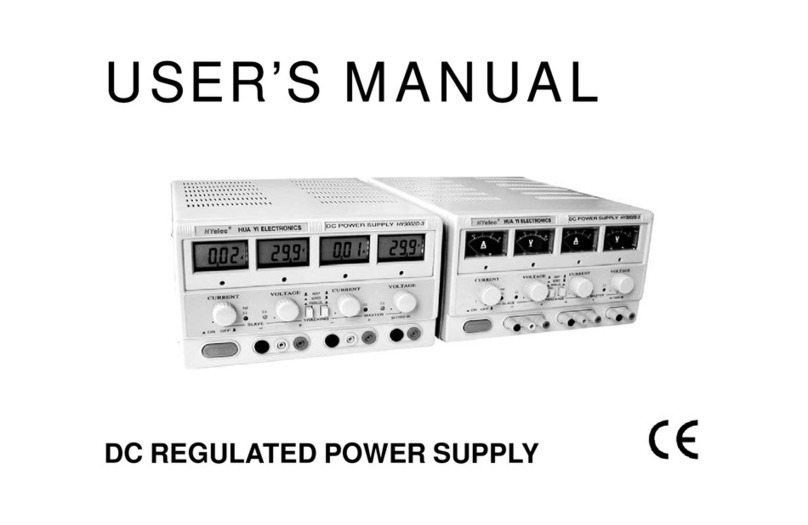
HUA YI ELECTRONICS
HUA YI ELECTRONICS HYelec HY3002-2 user manual
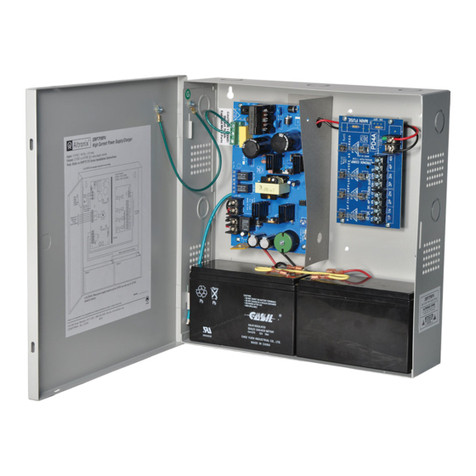
Altronix
Altronix SMP7CTX220 Series installation guide
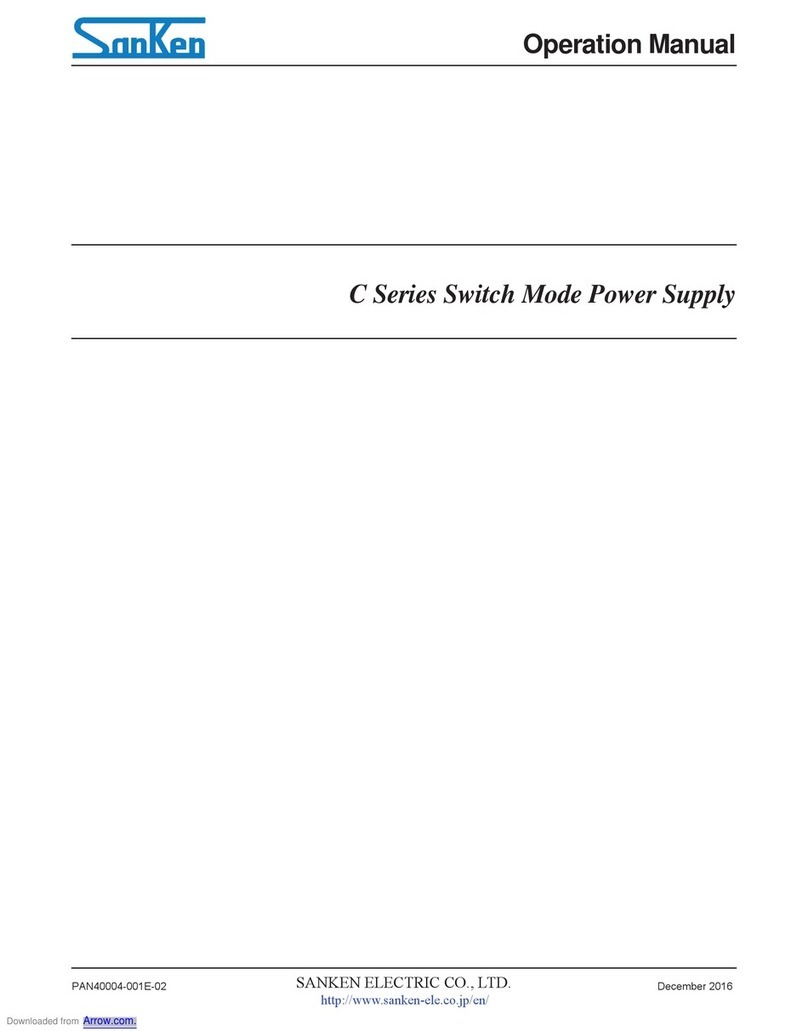
Sanken
Sanken C Series Operation manual
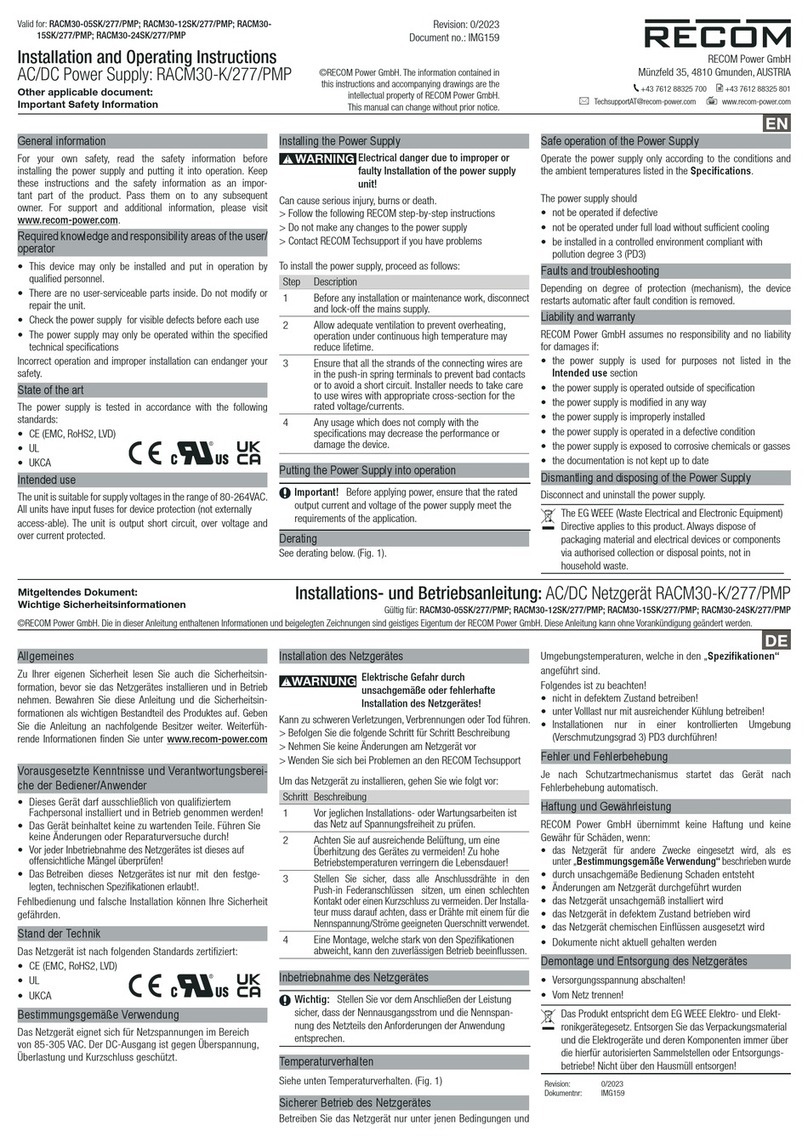
Recom
Recom RACM30-K/277/PMP Installation and operating instructions

